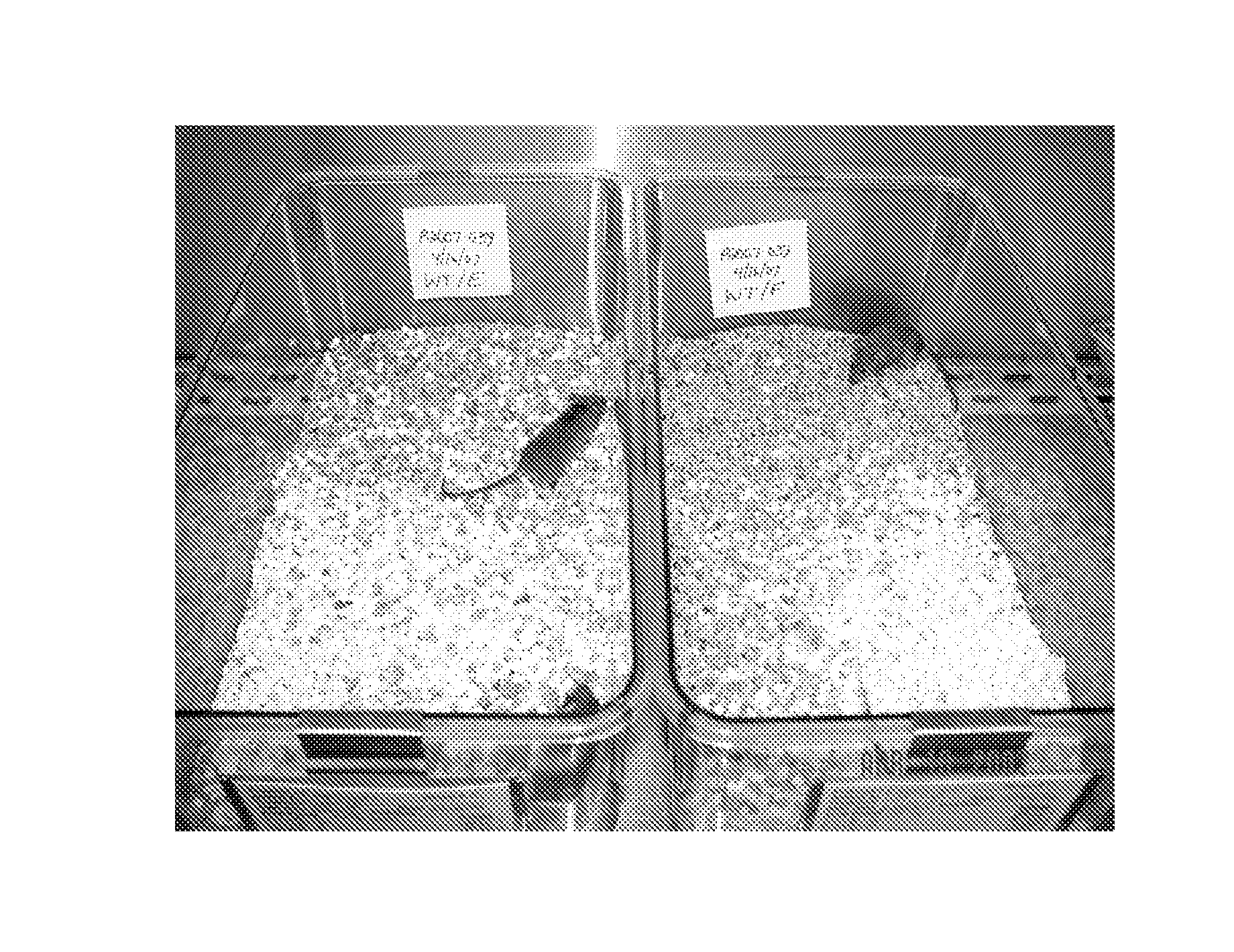Identifying agents to treat alzheimer's disease-related decreased sorting behavior by administration to a triple transgenic mouse expressing mutant forms of APP, presenilin or tau
a technology of alzheimer's disease and agents, applied in the field of rodent models of human disease, can solve the problems of requiring special equipment and training for conducting behavioral tests, causing significant distress both for patients and caregivers, and difficult behavioral correlates between mouse and man
- Summary
- Abstract
- Description
- Claims
- Application Information
AI Technical Summary
Benefits of technology
Problems solved by technology
Method used
Image
Examples
example 1
Sorting Behavior in an AD Model
[0061]The 3×Tg-AD mice developed by LaFerla et al., at the University of California at Irvine (Neuron 2003b) were used in the study. These mice harbor mutations in three different genes: the β-amyloid precursor protein (APPSweKM→NL), presenilin-1 (PS1M146V) and tau (P301L). Reports show, the mice exhibit both plaque and tangle pathology in brain regions relevant to AD, such as hippocampus and cortex. Intracellular A-beta peptide immunoreactivity has been reported to appear by as early as three months of age and extracellular A-beta deposits in evidence between six and 12 months of age (Oddo et al., 2003a, 2003b). In the cohort of mice used in the present studies, these hallmarks of AD were not observed until 19 months of age by immunohistochemical methods.
[0062]The goal of these studies was to examine the sorting behavior of both non-transgenic control and triple transgenic mice, and begin to elucidate its cause. In two separate studies, mice were hous...
example 2
Effect of Anti-Beta-Amyloid Mab on Sorting Behavior
[0082]Mice were housed 2 per cage, 6 cages per group. All mice were approximately two months of age at the start of the study. Mice were dosed weekly with test agent. All test agents were administered at 25 mg / kg, intraperitoneally. Cages were photographed 3 times weekly, and cage bedding was changed once per week.
[0083]CNTO2125 is a murine monoclonal antibody of the IgG1 isotype, created using to human A-beta peptide residues 1-7 (anti-N terminal Aβ) and CNTO4010 is a murine monoclonal antibody of the IgG1 isotype created by immunization of human A-beta peptide residues 35-40 (anti C-terminal Aβ40) as described in US Patent Application number US20050129695A1 (now abandoned). The mice were divided into 4 groups as follows:
[0084]
GROUP 1NON-TRANSGENIC + CNTO151 (IGG1 ISOTYPECONTROL MAB)GROUP 23XTG-AD + CNTO151 (IGG1 ISOTYPE CONTROL MAB)GROUP 33XTG-AD + CNTO2125 (ANTI N-TERMINAL Aβ)GROUP 43XTG-AD + CNTO4010 (ANTI C-TERMINAL Aβ40)
[0085]...
PUM
 Login to View More
Login to View More Abstract
Description
Claims
Application Information
 Login to View More
Login to View More - R&D
- Intellectual Property
- Life Sciences
- Materials
- Tech Scout
- Unparalleled Data Quality
- Higher Quality Content
- 60% Fewer Hallucinations
Browse by: Latest US Patents, China's latest patents, Technical Efficacy Thesaurus, Application Domain, Technology Topic, Popular Technical Reports.
© 2025 PatSnap. All rights reserved.Legal|Privacy policy|Modern Slavery Act Transparency Statement|Sitemap|About US| Contact US: help@patsnap.com

